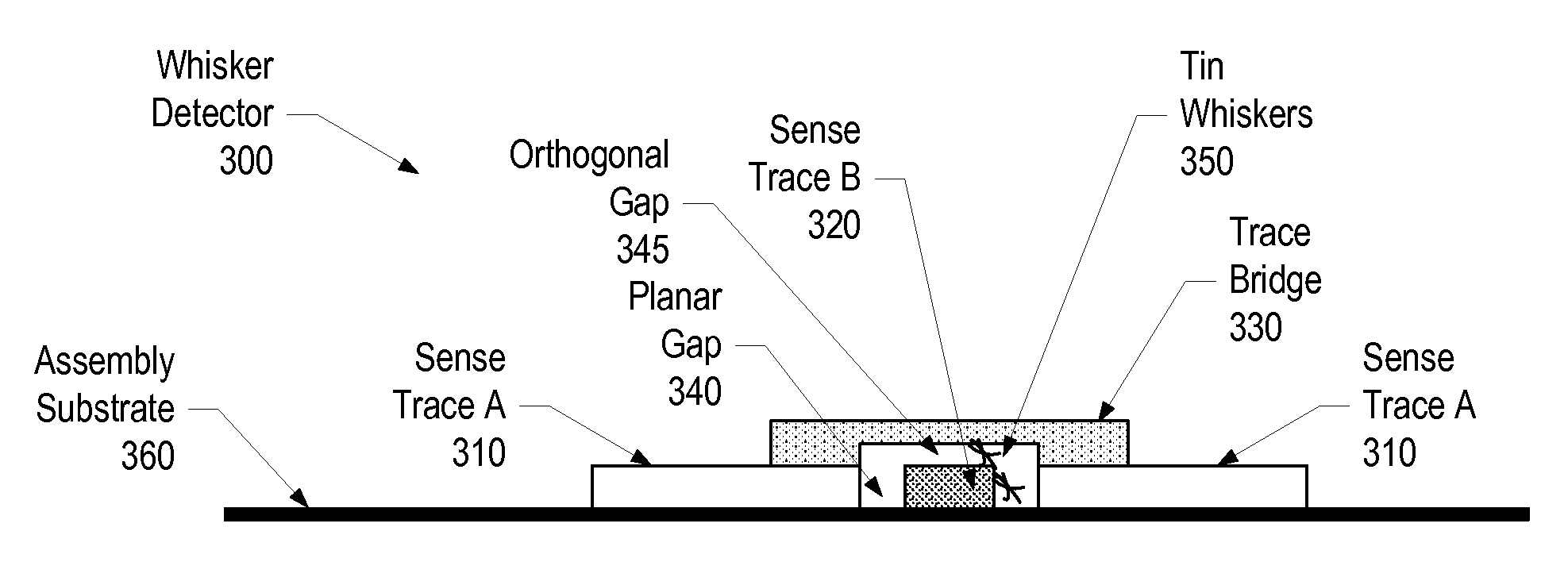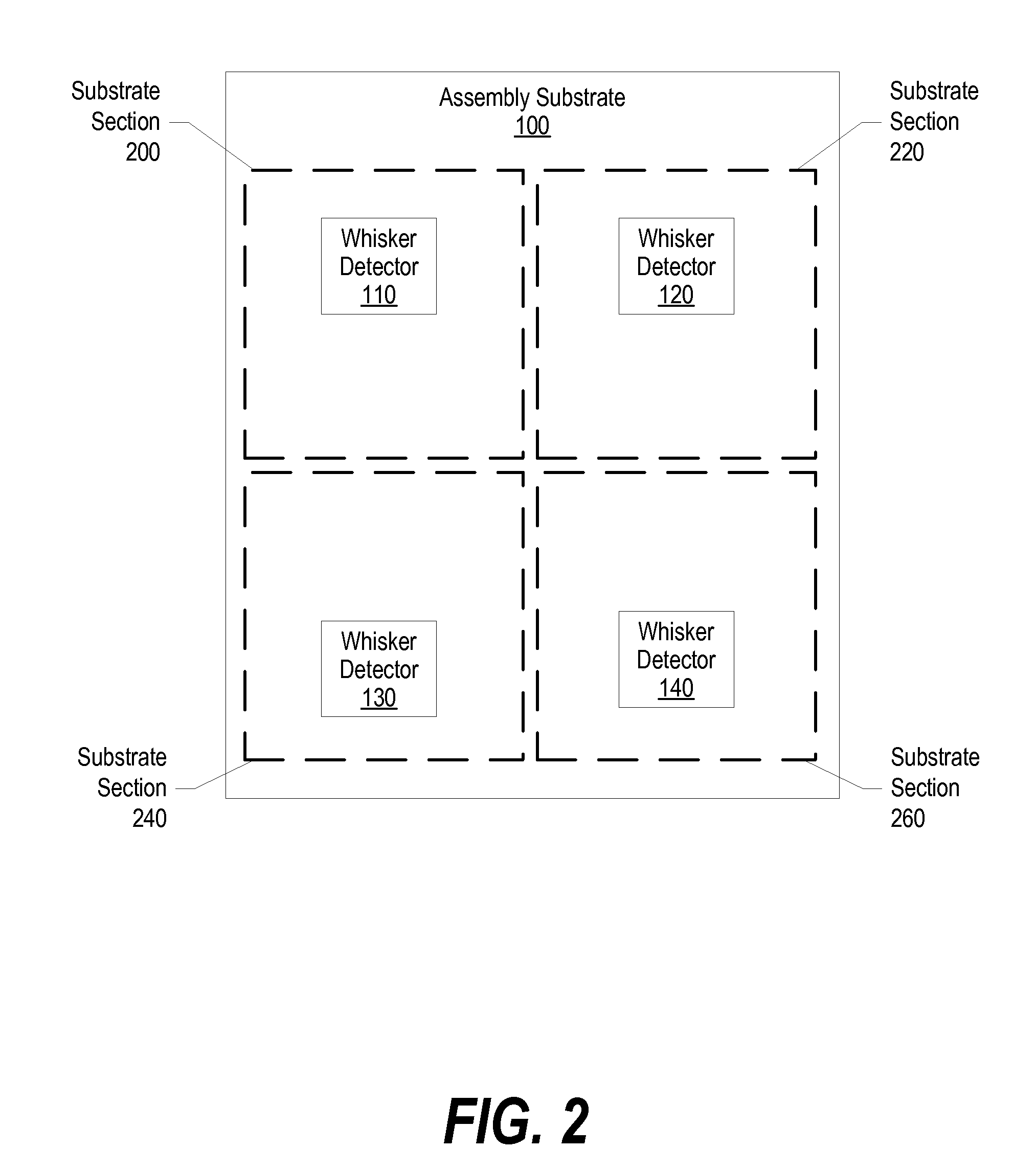System and method for sensing the formation of tin whiskers
a technology of tin whiskers and sensors, applied in the direction of electronic circuit testing, measurement devices, instruments, etc., can solve the problems of prone to development, erratic component failure, and inability to predict the formation of tin whiskers
- Summary
- Abstract
- Description
- Claims
- Application Information
AI Technical Summary
Benefits of technology
Problems solved by technology
Method used
Image
Examples
Embodiment Construction
[0022]The following is intended to provide a detailed description of an example of the invention and should not be taken to be limiting of the invention itself. Rather, any number of variations may fall within the scope of the invention, which is defined in the claims following the description.
[0023]FIG. 1 is a diagram showing a test system using whisker detectors, which are integrated onto an assembly substrate, to test for the presence of tin whiskers. A soldering process uses tin to solder components (integrated circuits, memory, etc.) onto assembly substrate 100. Tin is prone to developing “whiskers,” which may cause shorts on the assembly substrate. As such, assembly substrate 100 includes whisker detectors 110-140 that detect tin whisker formations in a “sense gap,” which includes a “planar gap” and an “orthogonal gap.” The planar gap detects tin whisker formations along the plane of a corresponding assembly substrate, and the orthogonal gap detects tin whisker formations in a...
PUM
 Login to View More
Login to View More Abstract
Description
Claims
Application Information
 Login to View More
Login to View More - R&D
- Intellectual Property
- Life Sciences
- Materials
- Tech Scout
- Unparalleled Data Quality
- Higher Quality Content
- 60% Fewer Hallucinations
Browse by: Latest US Patents, China's latest patents, Technical Efficacy Thesaurus, Application Domain, Technology Topic, Popular Technical Reports.
© 2025 PatSnap. All rights reserved.Legal|Privacy policy|Modern Slavery Act Transparency Statement|Sitemap|About US| Contact US: help@patsnap.com



